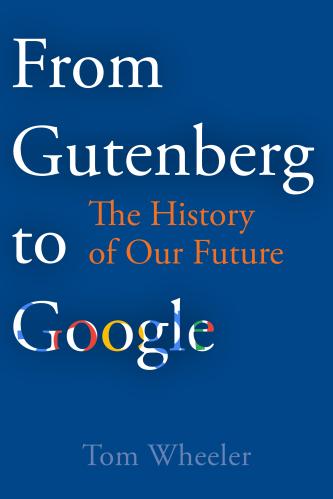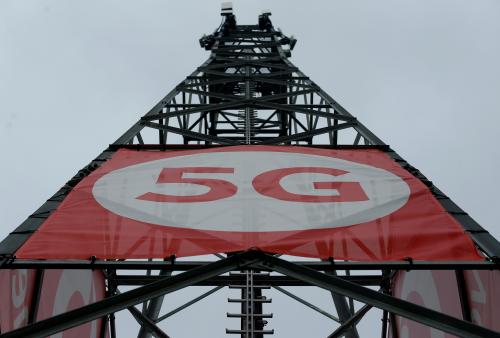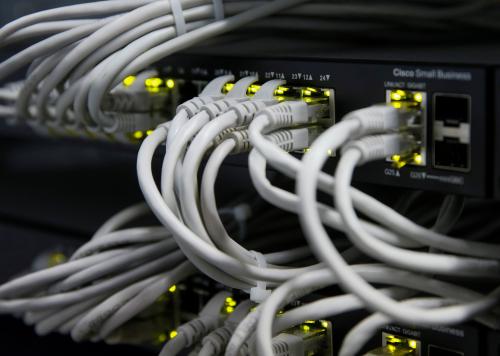The regulatory scope of the Federal Communications Commission (FCC) extends to approximately one-sixth of the domestic economy. What makes the impact of the agency even more significant is how the other five-sixths of the economy relies on the networks the FCC regulates.
The preceding five parts of the Build Back Better with Biden FCC series have focused on headline-grabbing issues that will confront the new makeup of the agency. In this final installment, we look at the broad sweep of other—yet no less important—issues which the FCC must deal with as the deciding actor.
The Immediate Challenge: A Deadlocked Commission
Washington “Wise Man” Blair Levin has observed that the FCC is “adopting some of the theatrical and dysfunctional elements of Congress.” Unfortunately, this means polarization along party lines on major issues.
On his way out the door Donald Trump pushed to assure political deadlock at the FCC. After his November election loss, Trump rushed a new Republican commissioner through the Republican-controlled Senate. The day before the confirmation hearing—which was the week following his election loss—Donald Trump tweeted he “wanted action NOW on this very important confirmation hearing!” This confirmation was important because it would prevent the Democrats from having a 2-1 majority immediately following the Biden inauguration.
The party that controls the White House always holds the majority on the FCC. However, until President Biden appoints—and the Senate confirms—a third commissioner, the agency will be deadlocked at 2-2. Absent a majority, there will be no substantial policy decisions on matters such as cybersecurity, net neutrality, broadband program reform, and privacy.
“Absent a majority, there will be no substantial policy decisions on matters such as cybersecurity, net neutrality, broadband program reform, and privacy.”
To complicate things, there are actually two Democratic commissioner slots that President Biden needs to fill and the Senate must confirm. The term of Jessica Rosenworcel, the senior Democrat and thus acting chair until President Biden makes his appointments, expired in June 2020. The law, however, allows for the incumbent to continue to serve until the end of the next session of Congress, or until the seat is filled by presidential appointment and Senate confirmation.
Absent new appointments and swift confirmation, the commission will remain deadlocked. In politicized Washington it is in the Republicans interest to thwart Biden initiatives by keeping the FCC deadlocked. As exemplified by the slow confirmation rate of Biden Cabinet appointees, the closely divided Senate is not optimal for quick consideration of new appointees.
Challenge number one, therefore, is a Democratic majority that can chart a Biden agenda at the FCC.
Privacy
In 2016 the Obama FCC adopted—on a 3-2 vote—privacy protections applicable to internet service providers (ISPs) offering last-mile connections to consumers. That policy was modeled after the privacy rules that had applied to telephone networks for years.
Sixty-seven days into the Trump administration, the Republican-controlled House and Senate, in largely party-line votes, passed resolutions repealing the privacy protections and forbidding the FCC from enacting the rules again. “House Republicans just voted to let your internet provider sell your browsing history without your permission,” one headline tersely explained. Donald Trump signed the repeal. The new Trump FCC Chairman Ajit Pai—who had voted against the protections as a commissioner—heralded the repeal, promising the FCC would not become involved in privacy protection.
Today, because of the absence of FCC privacy protections, network providers are selling access to their subscribers’ private information. The effect of the Republican repeal and Trump FCC inaction creates a strange situation where information created by a telephone call is protected, but information using internet connection is not. For instance, if a consumer calls Air France to make a reservation, the phone company cannot sell that information to a French tour operator. However, if the consumer makes that reservation online, using the same smartphone and the same network, the company can sell access to that information.
Pai claimed it was unfair to make the networks protect their users’ private information because there were no such requirements for digital platforms such as Google or Facebook. The FCC, however, has no authority over those platforms. It does have the responsibility to protect the privacy of users on the networks it regulates.
The key to reinstating privacy protections for network users begins with the reinstatement of the net neutrality rules repealed by the Trump FCC (see Part 4 of this series). Returning ISPs to common carrier status that was eliminated by the Trump FCC triggers their responsibility to protect the privacy of their subscribers. While the repeal of the Obama FCC privacy rules means the FCC cannot reenact those same rules, it can accomplish the same effect through new, differently structured rules.
Section 230 and the Policing of Social Media
Donald Trump wanted the FCC to become the police of social media content. Reportedly, this was triggered by Twitter’s including a fact check label and a link to facts about mail-in ballots on his May 26 tweet which claimed mail-in ballots were “substantially fraudulent.” In Executive Order 13925 Trump complained that social media platforms “are engaging in selective censorship” and ordered the FCC to begin the process of regulating such editorial decisions.
“Republicans feel that Social Media Platforms totally silence conservative voices,” Trump protested. “We will strongly regulate, or close them down, before we can ever allow this to happen,” he tweeted. Trump FCC Chairman Pai chimed in, seeking federal determination of, “How do those companies make decisions about what we see and what we don’t? And who makes those decisions?”
Section 230 of the Communications Act—which limits the liability of internet services’ content moderation decisions—became Donald Trump’s chosen vehicle. Trump proposed the FCC limit those protections by determining the “good faith” of the editorial decision. But first, the FCC needed to establish that it had the authority Trump wanted it to have. To accomplish this, the agency’s general counsel (who worked for the chairman) issued an opinion justifying the FCC’s power to do as Trump requested. “The FCC has the authority to interpret all the provisions of the Communications Act,” the opinion held, including “the power to interpret ambiguous language.”
The door was thus opened to the FCC becoming the judge and jury of “how do those companies make decisions about what we see.” The Trump FCC, which had spent the previous years of its term assiduously cutting the agency’s authority, swiftly expanded that authority into previously untouched areas that probably infringe on the protections of the First Amendment. The Trump FCC’s expansion of its power, for instance, could be construed to allow the agency to extend its editorial review to include decision making at broadcast outlets, cable companies, and common carriers.
“The Trump FCC, which had spent the previous years of its term assiduously cutting the agency’s authority, swiftly expanded that authority into previously untouched areas that probably infringe on the protections of the First Amendment.”
Acting Chair Rosenworcel, then sitting as a commissioner, correctly decried the Trump effort to turn the FCC into speech police. Today, however, the Trump inspired expansive opinion remains in effect.
Merger Approval
The FCC has an important role to play in reviewing mergers that involve the transfer of FCC-granted licenses. Unlike the Department of Justice (DOJ), which must present to a court specifically how a proposed merger violates the antitrust statutes, the FCC only has to prove that transferring the license would not be in the public interest. During the Obama years the FCC and DOJ worked closely together in their joint merger review responsibilities. During the Trump tenure that cooperation became more of an exception than the rule.
The proposed $6.2 billion acquisition by Verizon of TracFone, one of the largest non-network-based providers of mobile phone service, is currently pending at the FCC. TracFone’s principal market is prepaid service for low-income consumers. The Justice Department appears to have given the merger the green light, but multiple state attorneys general have asked the FCC to give the transaction a deeper look. The Communications Workers of America and various public interest groups have also raised concerns.
Soon to be before the commission is the proposed spinoff of the satellite television distributor DirecTV from AT&T into a new entity jointly owned with private equity fund TPG. AT&T will retain 70% of the common equity. The commission will have to approve the transfer of the licenses to the new entity.
If approved, the DirecTV deal is widely expected to be the precursor of another transaction that would merge the new DirecTV entity with its competitor DISH Network. This too would require the approval of both the DOJ and FCC. As it would represent a reduction from two competitors to none in the direct-to-home satellite market, the second transaction can be expected to draw a great deal of interest.
There will probably also be continuing mergers of cable TV and broadband businesses. Altice USA has already announced its intention to acquire North Carolina cable provider Morris Broadband. Supposition exists that further consolidation in the cable TV and broadband business can be expected.
Disability Accessibility and Employment
The FCC is where the rights of individuals with disabilities intersect with the capabilities and opportunities of digital technology. This is a unique time in history in which it is possible to harness technology to address issues that have forever challenged individuals with disabilities. Government has an important role to make certain these improvements are not just talked about, but actually occur. The FCC also has the opportunity to be an example in providing employment opportunities for individuals with disabilities, including individuals with intellectual and developmental disabilities.
“This is a unique time in history in which it is possible to harness technology to address issues that have forever challenged individuals with disabilities.”
For decades, individuals who are deaf or hard of hearing relied on TTY technology for real time communication. The acronym itself—TeleTYpewriter— tells the age of this text-based communication system in which users “communicate” with each other by means of a special device connected to the telephone network. Today, however, a better real time text communication capability is available with real- time-text (RTT) technology. An advantage of RTT is that both sides of a conversation can see the message as it is written with no delay. Though approved by the Obama FCC for wireless phone transmissions, the Trump FCC failed to follow through on RTT compliance by wireless providers or complete pending rules for wireline RTT and wireless and wireline RTT interoperability.
The FCC is responsible for implementing the 2010 21st Century Communications and Video Accessibility Act (CVAA) that was passed to bring accessibility requirements up to date with digital technology. The closed captioning of television programs is one example of how digital technology can help to implement positive outcomes. The Obama FCC followed through on the CVAA’s directive to require captioning for TV programming shown via internet protocol (IP), but the Trump FCC failed to address outdated exemptions for captioning TV networks, as well as new gaps in coverage created by the surge of internet-delivered video.
The disability community was also affected by the Trump FCC’s allegation of “waste, fraud and abuse” against government programs aiding specific communities. As a consequence, the FCC drove down support and increased sign-up difficulties for telecommunications relay services (TRS) by which an individual who is deaf, hard of hearing, or speech disabled can speak to another person remotely through an interpreter or other type of communications assistant. Beyond this, the Trump FCC did nothing to help ensure that video conferencing systems, which we have come to rely on so heavily during the pandemic, are fully accessible to individuals with disabilities.
There are multiple other issues where the FCC has the opportunity to keep the benefits of new technology flowing to those who could benefit from the new capabilities. It now falls to the Biden FCC to catch up.
Paying for What’s Important
As previously discussed in Part 1 and Part 2 of this Build Back Better series, broadband connectivity for all Americans is more important now than ever before. Yet the funding base that supports FCC-administered programs to facilitate such connectivity is weaker than ever.
Few recognize that the FCC has what amounts to “tax and spend authority.” That “tax” is the fee the Congress directed the FCC to collect to support designated activities ranging from subsidizing rural broadband deployment to connecting schools and libraries and other public interest connections. In 2019 those supports ranged from more than $5 billion for rural broadband, to almost $2 billion for schools and libraries, almost a billion for low-income support, and $250 million for rural telehealth. To fund these activities, a fee is levied on the intrastate and international portion of telephone bills. The practical effect is to raise consumers’ monthly phone bills by the designated amount and pass that increase on to the federal government.
But the “tax” spiraled upward during the Trump administration at an unacceptable rate that now threatens the entire program. In the first quarter of 2017, when the Trump FCC took over, the fee was 16.7%. By the first quarter of 2021 it had almost doubled to 31.8%. This increase occurred—despite the program costs remaining relatively constant at $8 billion—because the number of phone lines against which the fee is assessed have been declining. In 2010 the contribution base against which the fees were assessed was almost $72 billion. By 2019 the base had fallen to $52.9 billion.
As the FCC’s tax spiked during the four years of the Trump FCC, its leadership failed to take any action. A logical solution, for instance, would have been to seek congressional help. Another would have been to expand the funding base away from shrinking 20th century services like telephones to expanding 21st century services such as broadband. Another proposed solution, suggested by AT&T, would have been to eliminate the fee altogether and rely on congressional appropriations—although the perennial struggles with funding public broadcasting might be a warning in that regard. Finally, as he was preparing to leave the chairmanship, Ajit Pai suggested using spectrum auction proceeds to replace the phone taxes, something he could have taken leadership on earlier.
The Trump FCC’s failure to confront the contribution factor crisis has now been passed to the Biden FCC.
Broadband Speed
Another issue of public importance that was ignored by the Trump FCC is defining what constitutes high-speed broadband service. This is important because it becomes a benchmark for federal support programs as well as the measurement of the broadband competitive well-being of the nation and its citizens.
In 2015 the Obama FCC—on a 3-2 party line vote—increased the definition of “broadband” to 25 megabits per second (Mbps) into the location (the so-called “down” speed) and 3 Mbps out (“up”). The previous standard had been 4 Mbps down and 1 Mbps up. At the time, I described this as the minimum “table stakes” for viable internet speed. Today, half a dozen years later, that speed is unacceptable. As a commissioner, Trump FCC Chairman Ajit Pai opposed the 2015 increase. He refused to deal with the tremendous changes that had occurred in the intervening years or revisit the definition.
Shortly after the Biden administration took over, a bipartisan group of senators wrote to the FCC and other agencies saying, “We strongly urge you to update federal broadband program speed requirements to reflect current and anticipated 21st century uses.” Their focus was on federal funds being spent on substandard connections that claimed to be “broadband” but were “not capable of providing sufficient download and upload speeds and quality.” The senators recommended a symmetrical 100 Mbps down and 100 Mbps up. Such speeds are the new “table stakes.”
In 2015 80% of America had access to 25/3 speed. Today 80% of America has access to a speed of 1 gigabit (1 billion bits per second). The Trump FCC ignored the need for updating the standard. The Biden FCC can repair that failure.
Chevron Deference
In Chevron USA, Inc. v. Natural Resources Defense Council (1984) the Supreme Court held that when the courts review the decision of a federal agency, deference should be given to that agency’s interpretation of statute. As the subject matter expert, the rationale goes, the agencies are in the best position to interpret ambiguous or unclear statutory language. The Trump administration saw such deference as an expansion of the “administrative state” and used opposition to Chevron as a litmus test for appointment to the bench. There is supposition that the Trump appointees to the Supreme Court may seek to overturn the Chevron precedent. “Conservatives also hope to revive a doctrine called ‘nondelegation’ which would limit how much power Congress can delegate to agencies,” The Wall Street Journal reports.
The Chevron doctrine has been critical to many court reviews of FCC decisions. The decision to uphold the Obama FCC’s Open Internet Rules, for instance, was based on Chevron. Similarly, and perversely, the Trump FCC’s repeal of those rules was also upheld based on deference. The opinion of two judges in the repeal case observed the FCC’s ruling was “unhinged from the realities of modern broadband service.” Nevertheless, the court gave deference to the Trump FCC.
There is nothing the FCC, or any other federal agency, can do about the potential overhaul of almost four decades of deferential jurisprudence. But the potential nevertheless remains that the Biden FCC will suddenly be confronted by a change in the practice of administrative law.
Loss of International Leadership
The present domestic regulatory disfunction creates an opening for other nations—and even states of the union—to step into the void. In our interconnected world, the United States’ failure to act on the basic operational and behavioral issues associated with the internet has cost it the traditional role of leader. “A common refrain among European officials,” Politico reports, “is that they’re being forced to take action because the U.S. hasn’t.”
The European Union has proposed the Digital Markets Act to deal with competitive issues for “gatekeeper” companies and the Digital Services Act to deal with privacy issues. In the United Kingdom, the Competition and Markets Authority has created a Digital Market Unit that will establish a code of behavioral conduct for companies deemed to have “strategic market status.”
“The experience in California illustrates how, in an interconnected world, the decision of other nations can affect even state level policy.”
Individual states in the U.S. have moved to fill the void created by a lack of federal policy on issues ranging from privacy protection to net neutrality. The experience in California illustrates how, in an interconnected world, the decision of other nations can affect even state level policy. When California adopted its own data privacy law, it patterned many of its requirements on the EU’s General Data Protection Regulation (GDPR), put in place in 2018.
The border-spanning nature of the internet means that there is a first-mover advantage in regulation just as there is in the marketplace. Two weeks after adoption of the Obama FCC’s Open Internet Rule, representatives of the FCC met with their counterparts from the 28 nations of the EU as those nations worked to develop their own net neutrality rules. The result was harmonious international policy.
The Biden FCC’s first focus, of course, is on their responsibility to American consumers and American law. Such leadership, however, will resonate internationally and prevent purposeless diversity on a state-to-state basis domestically.
Conclusion
There is a seemingly endless list of other issues that will confront the Biden FCC: scourge of robocalls, understanding market behaviors including the pricing of services, enforcing existing rules, facilitating the 5G rollout, overseeing television and radio broadcasting, advancing satellite communications, and cooperating with other nations, to mention only a few.
The change in administration has created the opportunity to eschew performance government and return to process stability and the protection of consumers and competition. It means replacing doublespeak and spin with a return to saying what you mean and doing what you say.
First and foremost, however, the Biden FCC represents the opportunity to return to governing instead of de-governing.








Commentary
Rebuilding for the vast scope of FCC responsibilities
Part 6 of Build Back Better with Biden FCC
March 25, 2021